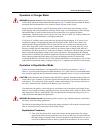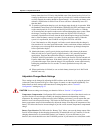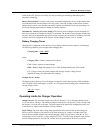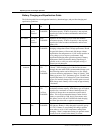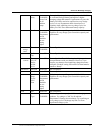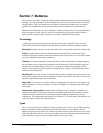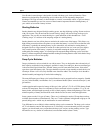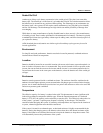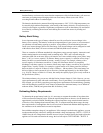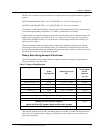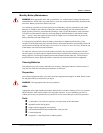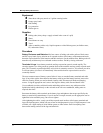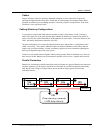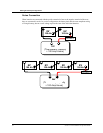
Prosine 2.5/3.0 Installation & Operation Guide 69
Section 7: Batteries
Sealed Gel Cell
Another type of deep-cycle battery construction is the sealed gel-cell. They don’t use removable
battery caps. The electrolyte is in the form of a gel rather than a liquid. The sealed construction allows
the batteries to be mounted in any position without spilling. The advantages are no maintenance (to
the battery itself—the system will still require routine maintenance), long life (800 cycles claimed)
and low self-discharge. The disadvantages are high initial cost and the possibility of damage from
overcharging.
While there are many manufacturers of quality flooded batteries, there are only a few manufacturers
of suitable gel-cells. Don’t confuse gel batteries with maintenance free batteries. The latter is typically
a standard liquid electrolyte type battery without caps for adding water, and if the electrolyte gets low,
you replace the battery.
AGM (absorbed glass mat) batteries are similar to gel-cells and deep-cycle types may be used in
inverter applications.
Environment
For long life and good performance, batteries need to be located in protected, ventilated enclosure
insulated from extremes in temperature.
Location
Batteries should be located in an accessible location with access to the battery caps and terminals. At
least six inches of clearance above is recommended. They must be located as close as possible to the
inverter, but can not limit the access to the inverter and the inverter’s over-current protection device.
Do not locate the inverter in the same space as the batteries, unless the batteries are of the sealed gel-
cell type.
Enclosures
Batteries must be protected inside a ventilated enclosure. The enclosure should be ventilated to the
outdoors from the highest point to prevent accumulation of hydrogen gasses released in the charging
process. An air intake should also be provided at a low point in the enclosure to allow air to enter the
enclosure to promote good ventilation.
Temperature
The effective capacity of a battery is reduced when cold. This phenomenon is more significant with
lead-acid type batteries compared to alkaline types. When the internal temperature of a lead-acid
battery is 32°F (0°C) the capacity can be reduced by as much as 50%. This effectively reduces the size
of the system’s “gas tank”, requiring more frequent “refueling” by the charger. This should be
considered when designing the system. If extremely cold temperatures are expected at the location of
a system, a heated equipment room should be considered.
If the system is located in an unheated space, an insulated enclosure is highly recommended for the
batteries. During the charging process, the batteries release heat due to the internal resistance of the
battery. If the batteries are insulated, the heat can be kept in the batteries to keep them warmer. This
will substantially increase the performance of the system.



